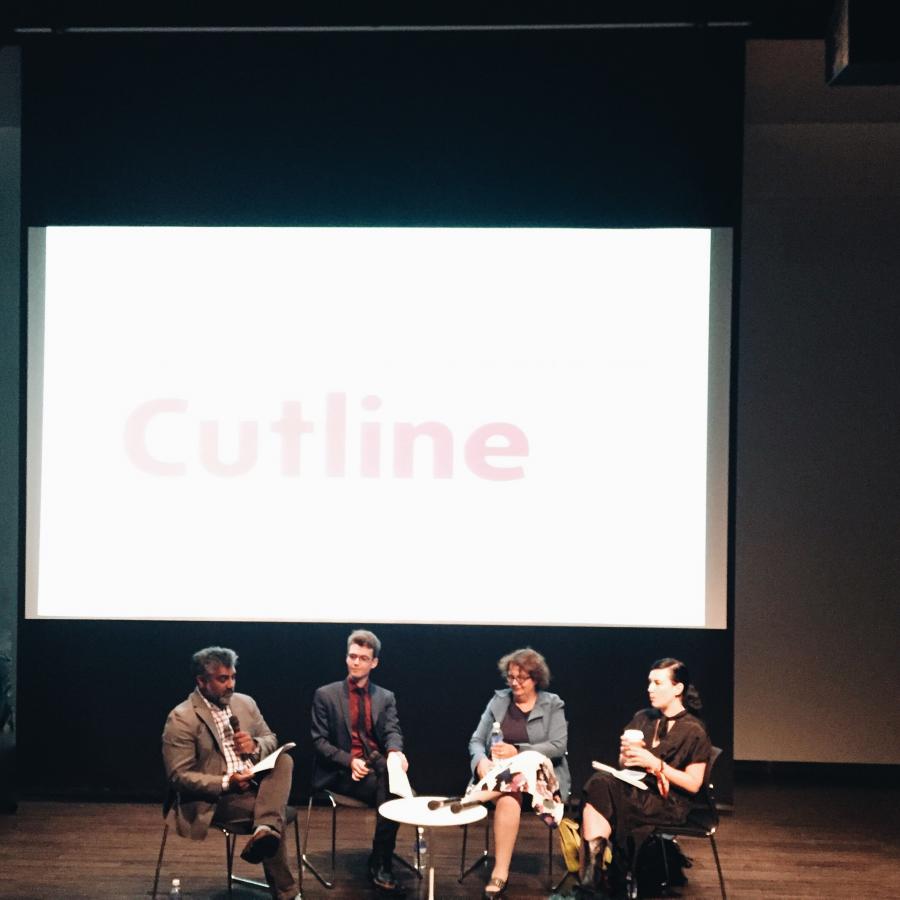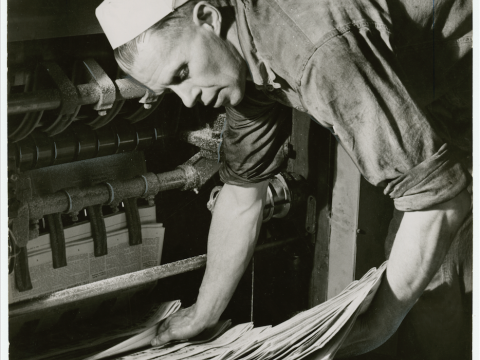“A simple tweet can be just as powerful as a front page headline from the Globe and Mail or the Edmonton Journal,” noted Mark Iype, editor-in-chief at the Edmonton Journal and Edmonton Sun, as he introduced the panelists featured at ‘Cropping the Truth: A Panel on Fake News.’ Paula Simons, the Edmonton Journal City Columnist agreed. “Fake news is not new, but social media has weaponized it,” she says. Dr. Jason Harley, professor of Educational Technology and Psychology at the University of Alberta, remarked that the “democratization of knowledge” is a huge psychological and evolutionary leap—one that we are still learning to navigate. Jana G. Pruden, feature writer at the Globe and Mail, recognized that both media outlets and individual consumers have a responsibility for openness as we deal with the fake news phenomenon.
The panelists all agreed that dealing with the new normal of fake news will require that citizens take responsibility for how they consume and share news. Here are a few tips that I took away from the panelists’ discussion at ‘Cropping the Truth’:
- Broaden your horizons. Paula Simons argues that “the onus is on every single media consumer to challenge themselves to broaden their scope.” While a print newspaper has the ability to present varying stories side by side, social media allows individuals to focus on what they agree with. Simons recommends turning on a news channel that you may not agree with to gain a better understanding of what interpretations of events other individuals might be basing their beliefs on.
- Expect more transparency from the media. The media plays an important role in finding and interpreting information. Jana G. Pruden notes that when the media makes a mistake, they should be open about it. Pruden says she makes a point to respond to everyone who writes to her with questions or concerns about her reporting at the Globe and Mail. Pruden also suggests that social media is a good tool for being transparent about her process of writing a story. Engaging in conversations with readers is a critical part of being open.
- Take responsibility for your contributions. Even if you are not the one reporting the news, sharing something false on social media is part of how fake news gains traction. If it comes to your attention that something you have shared is fake, take it down and alert your followers/friends your reason for doing so.
- Think critically. Dr. Jason Harley encourages us to do our own research. Ensure that the stories you are reading or listening to are coming from a source of which you have heard and that is reputable. Check the credentials of the writer and make sure that those credentials match what the writer is talking about. Critical thinking also means keeping your emotions in check. Pruden notes that you should be skeptical when a headline sums up everything you have ever thought and you want to share it immediately. Take a moment to check the source. It is important to remember that media outlets that you agree with are also capable of posting fake news!
This panel was organized in connection with Cutline: From the Photography Archives of the Globe and Mail which remains on view at the AGA until November 12. Come see how the defining moments in Canadian history were presented to the public. And don’t miss the next event in connection with the exhibition, a free screening of the docudrama, Truth on Wednesday, August 30.









